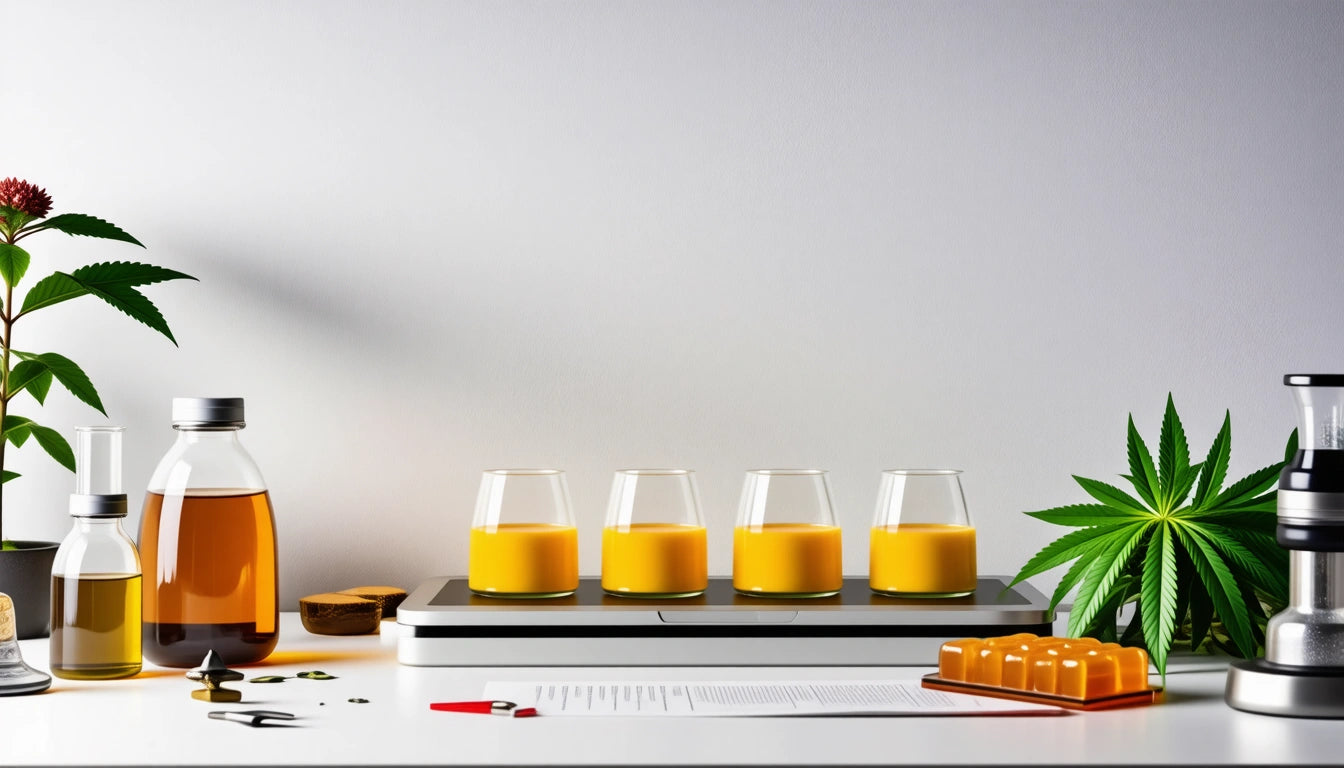Table of Contents
Understanding Grams: Converting and Measuring Small Weights
Grams are the foundation of weight measurement in the metric system, yet many people struggle with conceptualizing exactly how much weight different gram measurements represent. Whether you're wondering what is 15 gm in practical terms or how much is 25 gm compared to everyday objects, understanding gram measurements is essential for cooking, science, and various industries including cannabis.
What is GM Measurement: Understanding the Metric System
The gram (abbreviated as g or gm) is the basic unit of mass in the metric system. Originally defined as the absolute weight of a volume of pure water equal to one cubic centimeter at 4 °C, the gram is now defined by international agreement in terms of the kilogram, which is the SI base unit of mass.
One of the advantages of the metric system is its decimal nature. This makes converting between different units straightforward:
- 1 kilogram (kg) = 1,000 grams (g)
- 1 gram (g) = 1,000 milligrams (mg)
- 1 milligram (mg) = 1,000 micrograms (μg)
Understanding what is gm measurement is the first step to mastering small weight measurements across various applications.
Common Gram Measurements in Everyday Life
How Much is 5 gm?
Five grams is approximately the weight of a standard paper clip or a nickel coin. In cooking, it's roughly equivalent to one teaspoon of sugar. For context, 5 grams is a common quantity for small portions of herbs, spices, or other ingredients that are used in small amounts.
How Much is 15 gm?
Fifteen grams is approximately the weight of three nickels or about one tablespoon of butter. What is 15 gm in practical terms? It's roughly the weight of a standard envelope or the amount of sugar in a typical restaurant sugar packet. This weight is often used for single-serving portions of various food items.
How Much is 25 gm?
Twenty-five grams equals about five nickels or a slice of bread. Understanding how much is 25 gm can be helpful when portioning ingredients or measuring product quantities. It's slightly less than an ounce, making it a common measurement in cooking and food packaging.
How Much is 30 gm?
Thirty grams is just over one ounce (28.35 grams). This weight is comparable to a standard slice of packaged cheese or about six sheets of standard printer paper. When considering how much is 30 gm, it's helpful to know it's commonly used for single-serving packages of snacks and other food items.
Converting Grams to Other Units
Converting between grams and other units is essential for international recipes, scientific work, and understanding product weights.
Grams to Ounces
To convert grams to ounces, divide the gram value by 28.35:
- 5 grams ≈ 0.18 ounces
- 15 grams ≈ 0.53 ounces
- 25 grams ≈ 0.88 ounces
- 30 grams ≈ 1.06 ounces
Converting grams to ounces is particularly useful when working with recipes from different countries or when purchasing products with different measurement standards.
Grams to Pounds
To convert grams to pounds, divide by 453.6:
- 5 grams ≈ 0.011 pounds
- 15 grams ≈ 0.033 pounds
- 25 grams ≈ 0.055 pounds
- 30 grams ≈ 0.066 pounds
These conversions help bridge the gap between metric and imperial measurement systems, which is particularly important in international commerce and communication.
Visualizing Gram Weights: What Do Different Amounts Look Like?
Understanding weights conceptually can be challenging. Here are some visual references for common gram measurements:
- 1 gram: A paperclip or a dollar bill
- 5 grams: A nickel coin or a teaspoon of sugar
- 15 grams: Three nickels or a tablespoon of butter
- 25 grams: Five nickels or a slice of bread
- 30 grams: A packaged slice of cheese or 1 ounce
These visual references can help you estimate weights when precision isn't critical or when you don't have a scale handy.
Tools for Accurate Gram Measurement
For precise measurements, various tools are available:
Digital Scales
Digital scales are the most accurate way to measure grams. Modern digital scales can measure with precision to 0.01 grams or better, making them ideal for applications requiring exact measurements. For those working with herbs or plant material, quality grinder machines can help prepare material for more accurate weighing and consistent results.
Kitchen Scales
Kitchen scales typically measure in increments of 1 gram and are perfect for cooking and baking. They often have conversion features to switch between grams and ounces.
Measuring Spoons and Cups
While less precise than scales, measuring spoons and cups can provide approximate gram measurements for common ingredients:
- 1 teaspoon ≈ 5 grams (sugar)
- 1 tablespoon ≈ 15 grams (sugar)
- 1/4 cup ≈ 50 grams (flour)
Remember that these equivalents vary depending on the ingredient density.
Practical Applications of Gram Measurements
Understanding gram measurements has practical applications across many fields:
Cooking and Baking
Professional recipes often list ingredients by weight rather than volume for consistency and precision. Understanding gram measurements allows for more accurate recipe execution, especially in baking where precision is crucial.
Dietary Tracking
Nutritional information is typically provided per gram of food, making gram measurements essential for those tracking macronutrients or calories.
Scientific Research
In laboratory settings, precise measurements are critical. Scientists regularly work with measurements ranging from micrograms to kilograms.
Retail and Commercial Use
Products are often sold by weight, with gram measurements being standard for smaller items. Understanding weights and pricing helps consumers make informed purchasing decisions.
By mastering gram measurements and conversions, you'll be better equipped to handle a variety of practical situations requiring weight measurement. Whether you're cooking a complex recipe, following a specific diet, or working in a field that requires precise measurements, understanding grams provides a foundation for accuracy and consistency.











Leave a comment
All comments are moderated before being published.
This site is protected by hCaptcha and the hCaptcha Privacy Policy and Terms of Service apply.